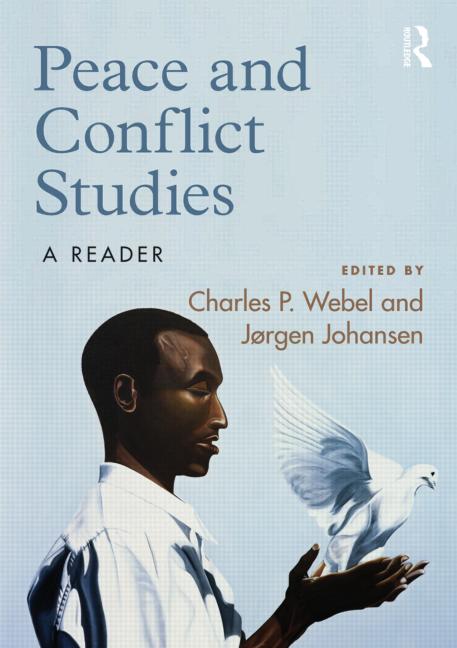Routledge will publish Webel and Johansen; Peace and Conflict Studies: A Reader on December 14th.
See: http://www.routledge.com/books/details/9780415591294/
It is a comprehensive and intensive introduction to the key works in this growing field.
Presenting a range of theories, methodologies, and approaches to understanding peace and to transforming conflict, this edited volume contains both classic and cutting-edge contemporary analyses. The text is divided into six general sections:
PART 1 PEACE STUDIES, PEACE EDUCATION, PEACE RESEARCH AND PEACE
1 Shaping a vision – the nature of peace studies CONRAD G. BRUNK
2 Four major challenges facing peace education in regions of intractable conflict GAVRIEL SALOMON
3 Peace in international relations OLIVER P. RICHMOND
4 Global peace index
5 Thinking peace CHARLES P. WEBEL
6 Positive and negative peace JOHAN GALTUNG
PART 2 PEACE THEORIES AND PEACE MOVEMENTS
7 Eternal peace IMMANUEL KANT
8 Address to the swedish peace congress in 1909 LEO TOLSTÓY
9 The moral equivalent of war WILLIAM JAMES
10 The Russell–Einstein manifesto
11 A human approach to world peace DALAI LAMA
12 “What is peace?” DAVID CORTRIGHT
13 ‘Introduction’ from Peace Movements in International Protest and World Politics since 1945 APRIL CARTER
14 From protest to cultural creativity: peace movements identified and revisited NIGEL YOUNG
THE MEANINGS AND NATURE OF CONFLICT
15 On Violence HANNAH ARENDT
16 Geneva declaration on armed violence and development
17 Preventing violence and reducing its impact: how development agencies can help WORLD HEALTH ORGANIZATION
18 Violence prevention: the evidence WORLD HEALTH ORGANIZATION
19 Letter to Sigmund Freud, 30 July 1932 ALBERT EINSTEIN
20 Why war? SIGMUND FREUD
21 UNESCO: the Seville statement
22 Psychological contributions to understanding peace and conflict CHARLES P. WEBEL AND VIERA SOTAKOVA
23 “The evil scourge of terrorism”: reality, construction, remedy NOAM CHOMSKY
PART 4 CONFLICT ANALYSIS, TRANSFORMATION AND PREVENTION
24 Protagonist strategies that help end violence LOUIS KRIESBERG AND GEAROID MILLAR
25 Nonviolent geopolitics: rationality and resistance RICHARD FALK
26 The United States and pro-democracy revolutions in the Middle East STEVEN ZUNES
27 How do post-conflict societies deal with a traumatic past and promote national unity and reconciliation? ANDREW RIGBY
28 Disarmament and survival MARC PILISUK
29 Overcoming war: the importance of constructive alternatives CHRISTINE SCHWEITZER
PART 5 NONVIOLENT ACTION AND POLITICAL CHANGE
30 Home rule M. K. GANDHI
31 Pilgrimage to nonviolence MARTIN LUTHER KING, JR.
32 How nonviolence works BRIAN MARTIN
33 From dictatorship to democracy: a conceptual framework for liberation GENE SHARP
34 Nonviolent revolutionary movements JØRGEN JOHANSEN
PART 6 BUILDING INSTITUTIONS AND CULTURES OF PEACE
35 A critique of robust peacekeeping in contemporary peace operations THIERRY TARDY
36 Social entrepreneurs and constructive change: the wisdom of circumventing conflict RYSZARD PRASKIER, ANDREJ NOWAK, PETER T. COLEMAN
37 Systems-building before state-building: on the systemic preconditions of state-building PETER HALDÈN
38 Gender and peace: towards a gender-inclusive, holistic perspective TONY JENKINS AND BETTY A. REARDON
39 Competing discourses on aggression and peacefulness MAJKEN JUL SØRENSEN
40 Gender, conflict, and social capital: bonding and bridging in war in the former Yugoslavia MAJA KORAC
41 Peaceful societies and everyday behavior ELISE BOULDING



